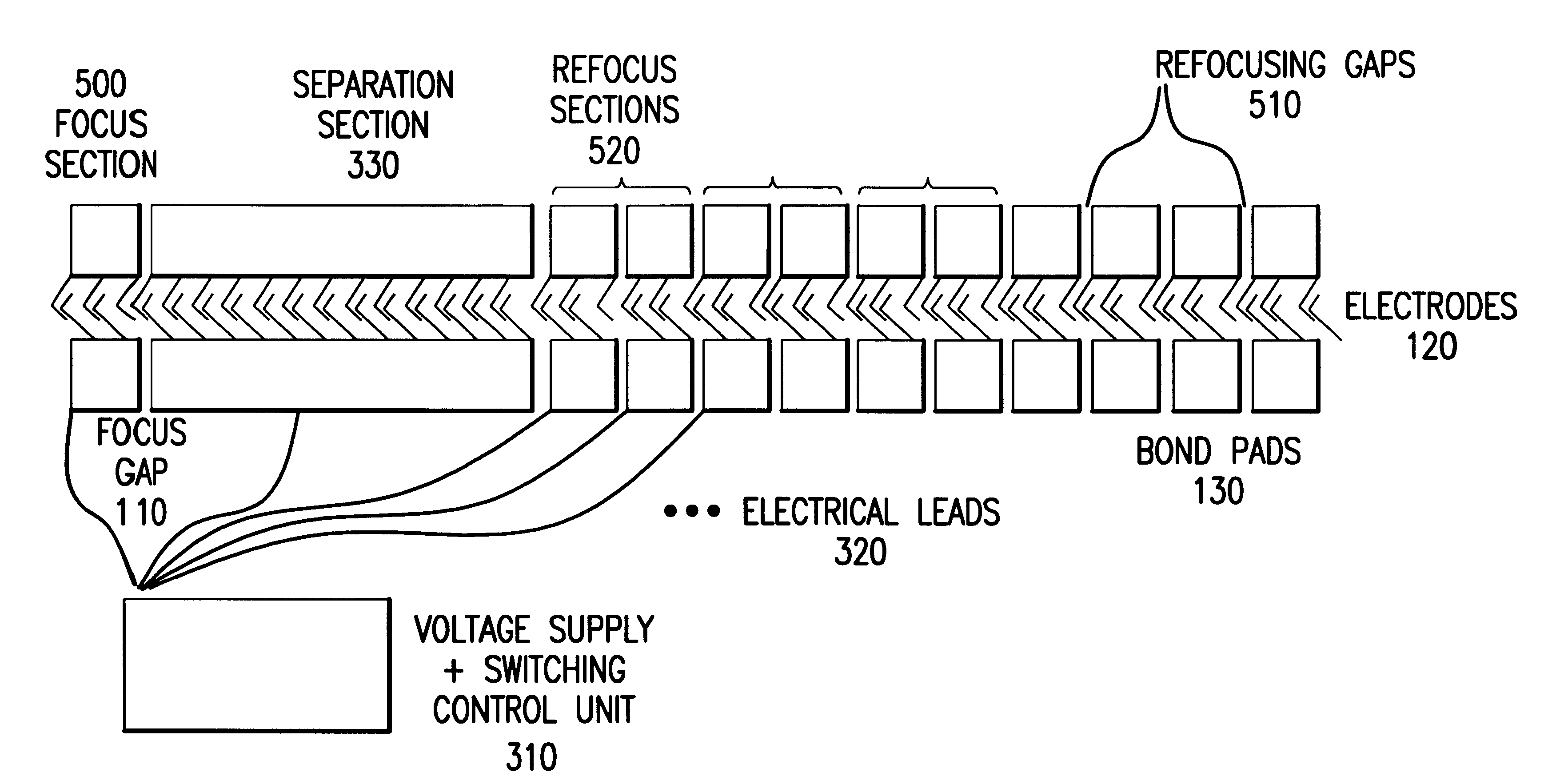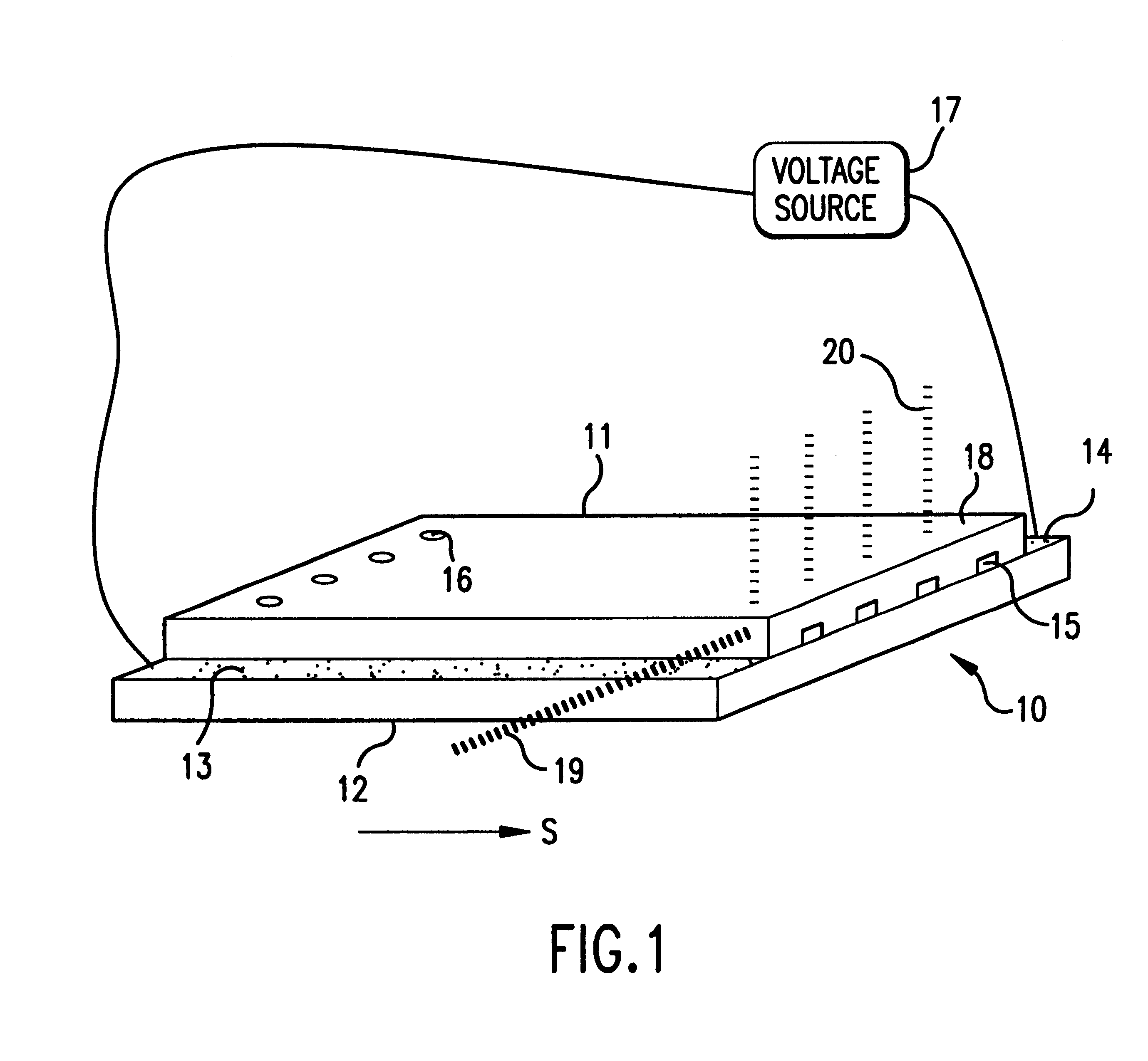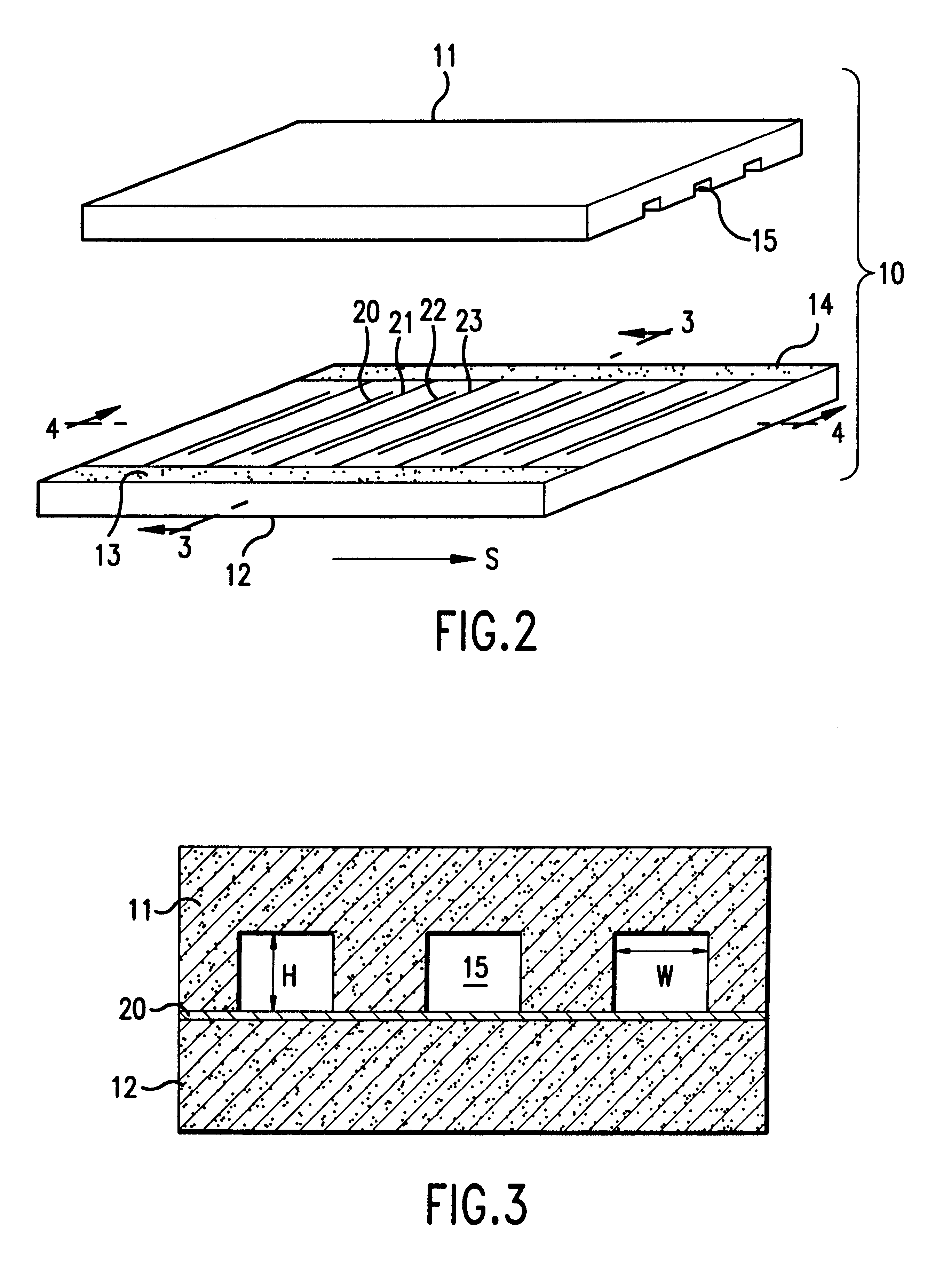Separation of charged particles by a spatially and temporally varying electric field
- Summary
- Abstract
- Description
- Claims
- Application Information
AI Technical Summary
Benefits of technology
Problems solved by technology
Method used
Image
Examples
Embodiment Construction
Sec. 5.1 describes the structure of an exemplary separation device according to this invention. Sec. 5.2 describes in a summary fashion the operation of a separation method and device. Sec. 5.3 describes in more detail the operation of the separation method and device, and provides a method for the selection of method operating conditions and device design parameters. Sec. 5.4 describes the important case of the separation of DNA. Finally, Sec. 5.5 describes exemplary methods for microfabrication a separation device according to this invention.
5.1. Description of a Separation Device
FIG. 1 illustrates a separation device according to this invention. This separation device and its particular embodiments, device types I and II, are the preferred physical structures for the device. However, charged particle separation according to the method of this invention can be practiced in any other physical structure having one or more separation lanes that hold a separation medium and that are s...
PUM
| Property | Measurement | Unit |
|---|---|---|
| Length | aaaaa | aaaaa |
| Length | aaaaa | aaaaa |
| Length | aaaaa | aaaaa |
Abstract
Description
Claims
Application Information
 Login to View More
Login to View More - R&D
- Intellectual Property
- Life Sciences
- Materials
- Tech Scout
- Unparalleled Data Quality
- Higher Quality Content
- 60% Fewer Hallucinations
Browse by: Latest US Patents, China's latest patents, Technical Efficacy Thesaurus, Application Domain, Technology Topic, Popular Technical Reports.
© 2025 PatSnap. All rights reserved.Legal|Privacy policy|Modern Slavery Act Transparency Statement|Sitemap|About US| Contact US: help@patsnap.com



